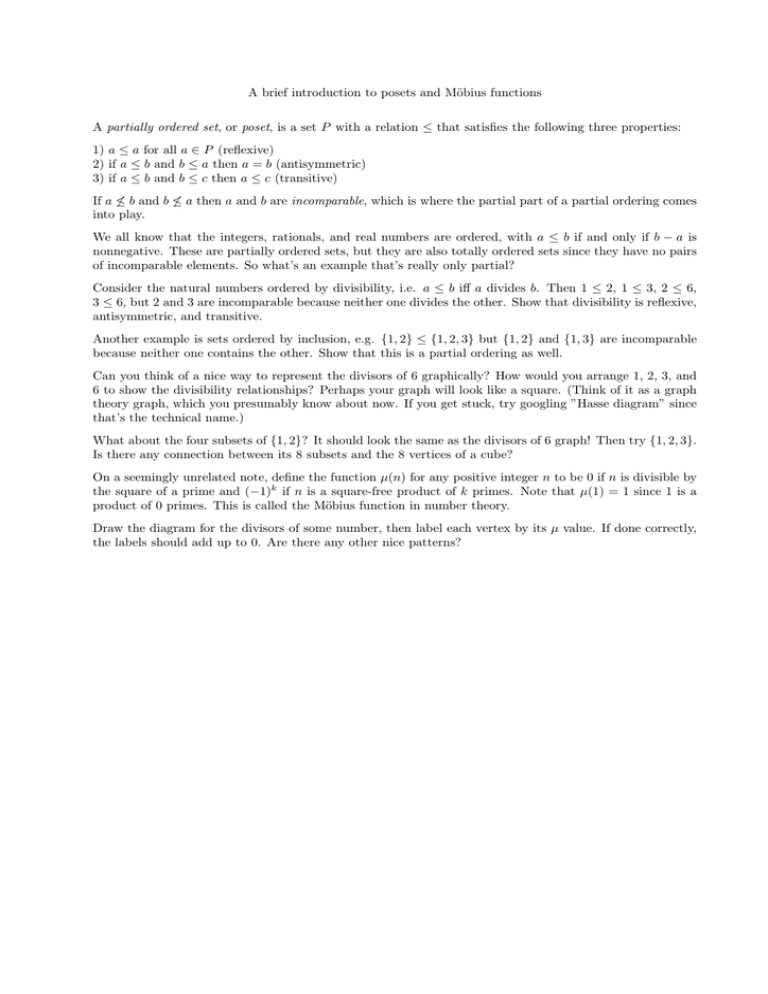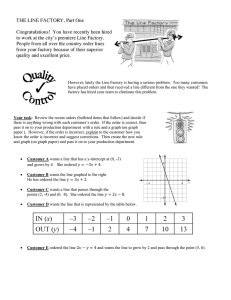A brief introduction to posets and M¨ obius functions
advertisement

A brief introduction to posets and Möbius functions
A partially ordered set, or poset, is a set P with a relation ≤ that satisfies the following three properties:
1) a ≤ a for all a ∈ P (reflexive)
2) if a ≤ b and b ≤ a then a = b (antisymmetric)
3) if a ≤ b and b ≤ c then a ≤ c (transitive)
If a 6≤ b and b 6≤ a then a and b are incomparable, which is where the partial part of a partial ordering comes
into play.
We all know that the integers, rationals, and real numbers are ordered, with a ≤ b if and only if b − a is
nonnegative. These are partially ordered sets, but they are also totally ordered sets since they have no pairs
of incomparable elements. So what’s an example that’s really only partial?
Consider the natural numbers ordered by divisibility, i.e. a ≤ b iff a divides b. Then 1 ≤ 2, 1 ≤ 3, 2 ≤ 6,
3 ≤ 6, but 2 and 3 are incomparable because neither one divides the other. Show that divisibility is reflexive,
antisymmetric, and transitive.
Another example is sets ordered by inclusion, e.g. {1, 2} ≤ {1, 2, 3} but {1, 2} and {1, 3} are incomparable
because neither one contains the other. Show that this is a partial ordering as well.
Can you think of a nice way to represent the divisors of 6 graphically? How would you arrange 1, 2, 3, and
6 to show the divisibility relationships? Perhaps your graph will look like a square. (Think of it as a graph
theory graph, which you presumably know about now. If you get stuck, try googling ”Hasse diagram” since
that’s the technical name.)
What about the four subsets of {1, 2}? It should look the same as the divisors of 6 graph! Then try {1, 2, 3}.
Is there any connection between its 8 subsets and the 8 vertices of a cube?
On a seemingly unrelated note, define the function µ(n) for any positive integer n to be 0 if n is divisible by
the square of a prime and (−1)k if n is a square-free product of k primes. Note that µ(1) = 1 since 1 is a
product of 0 primes. This is called the Möbius function in number theory.
Draw the diagram for the divisors of some number, then label each vertex by its µ value. If done correctly,
the labels should add up to 0. Are there any other nice patterns?



